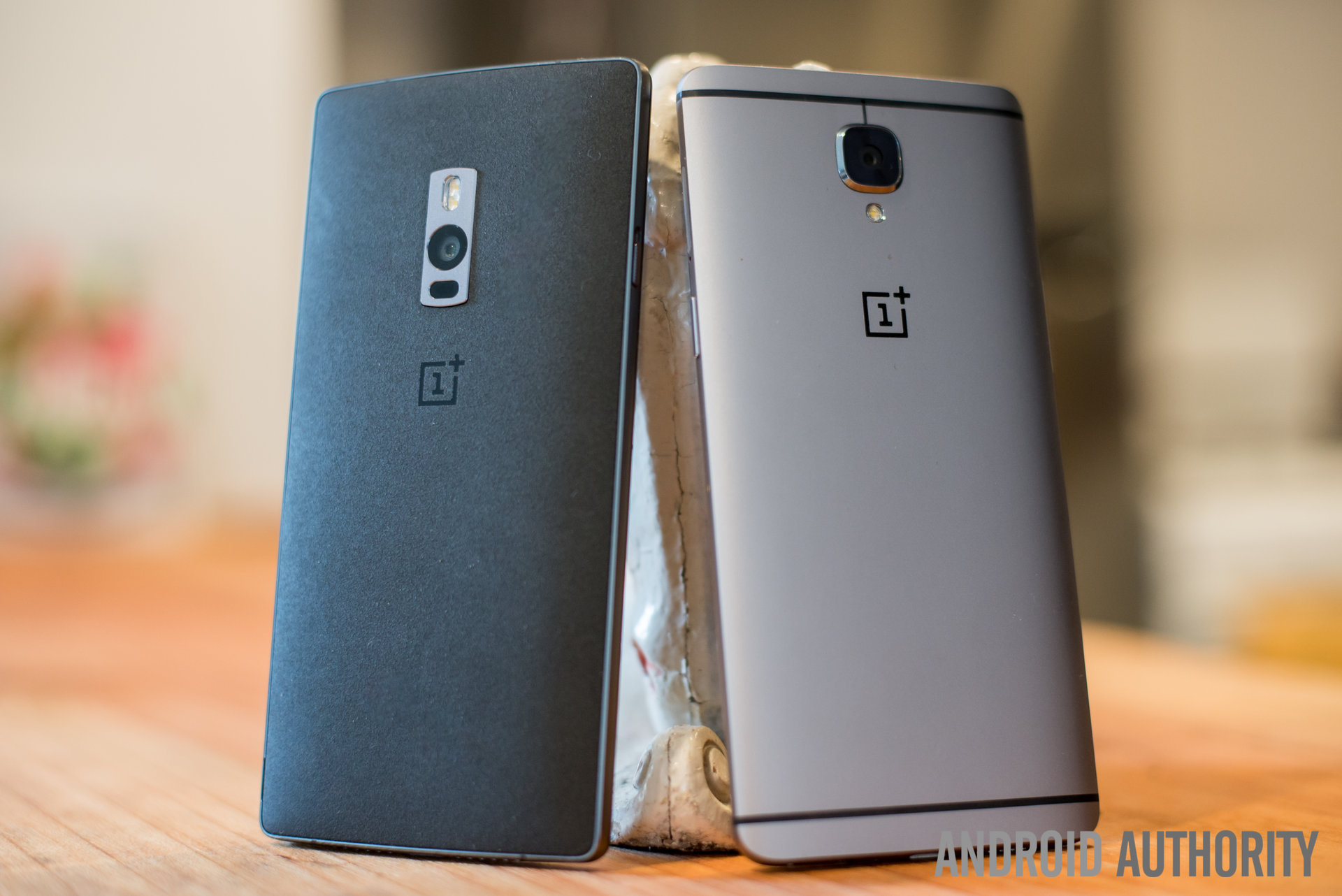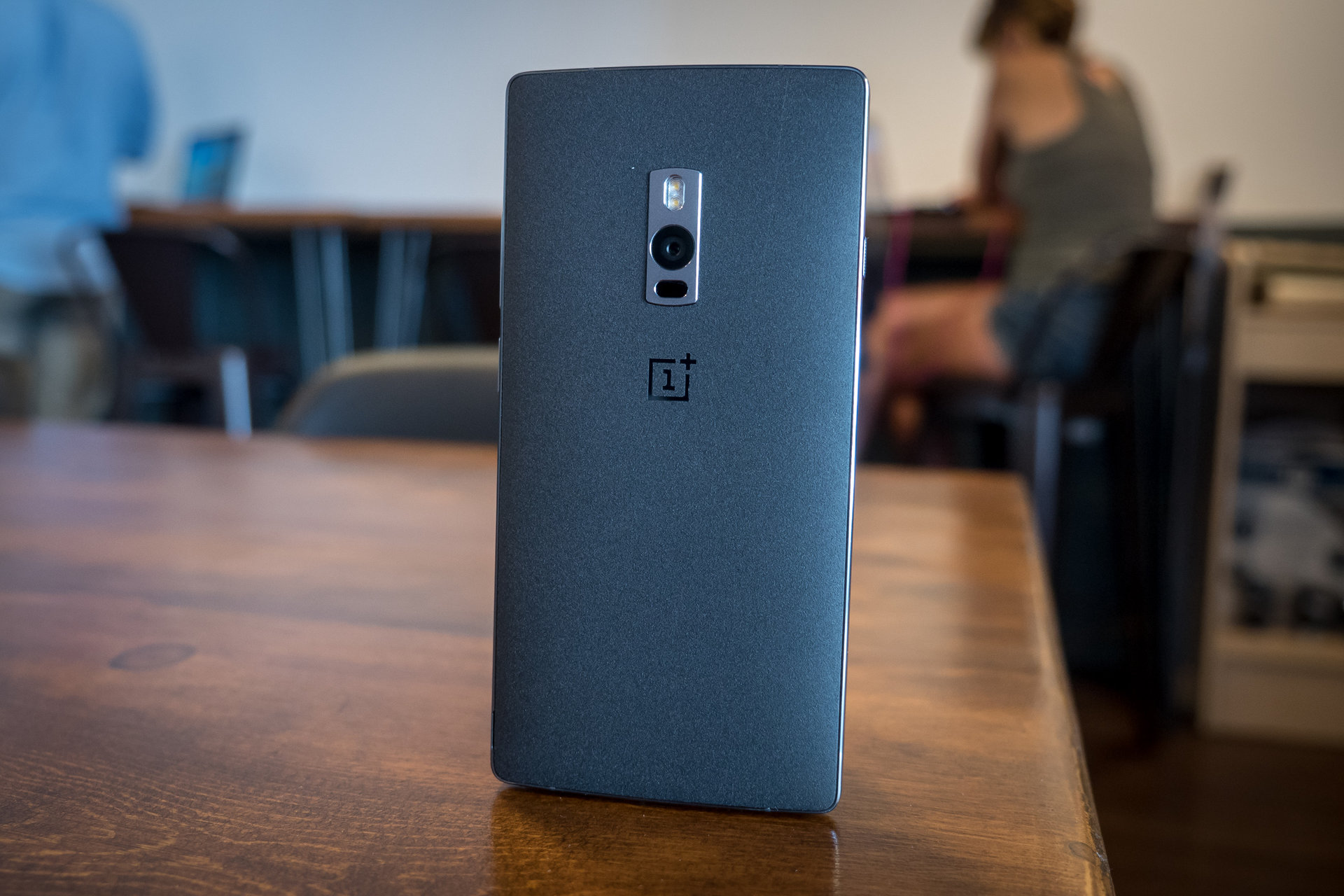Affiliate links on Android Authority may earn us a commission. Learn more.
OnePlus 3 vs OnePlus 2 quick look
Published onJune 14, 2016

OnePlus had figured out the hype game long before they’d released their first smartphone back in 2014. With a stream of teasers before its launch, followed by a soon-to-be dreaded invite system, the OnePlus One burst onto the scene and delivered everything that was promised. The hype remained strong for its successor, the OnePlus 2, but OnePlus was unfortunately victim to the sophomore slump, with the “2016 flagship killer” falling well short of some its 2015 competition in key aspects of the smartphone experience.
- OnePlus 3 review
- OnePlus 3 announced: everything you need to know
- Flagship spec showdown: OnePlus 3 vs the competition
- What would you change about the OnePlus 3?
It’s a new year now, and OnePlus is hoping to make a return to the top of the smartphone pile with their latest high-end offering. A new design and build quality, what should be key improvements to the camera and software experiences, and the much lauded removal of the invite system already makes the OnePlus 3 quite compelling, but how much of an upgrade is it from its predecessor? We find out, as we take a quick look at the OnePlus 3 vs OnePlus 2!

Design
In design, the OnePlus 2 retained some of the design elements of its predecessor, but while bringing more premium build materials into the mix. The device features a metal frame, and while that was something we did see with other flagship smartphones at the time, OnePlus managed to offer this premium look and feel at a fraction of the price. The sandstone back cover is a material that remains unique to OnePlus, and if that wasn’t to your liking, you always had an array of StyleSwap covers to choose from, with Bamboo and other wood-based covers being the most popular.
On the other hand, the OnePlus 3 marks a significant move on the part of OnePlus, with the device now featuring a full metal unibody construction, with subtle curves along the edges of the back to help the device nestle nicely in the palm of your hand. While the move to metal did bring the OnePlus flagship in line with the general design and build quality trends in 2016, this only means that the OnePlus 3 is now a part of the pack, rather than standing out from it.

The sandstone backing of the OnePlus 2 was a material choice that was unique to OnePlus, and perhaps more significantly, the StyleSwap covers are no longer a thing. Granted, you do get the option of different material choices with the regular covers that OnePlus will offer instead, but that is also standard across the board. All said and done though, OnePlus does manage to continue to make their high-end offerings extremely affordable, so you will be getting a device with with a flagship design and build quality at a far cheaper price point.
With the upgrade in quality, the OnePlus 3 loses out on individuality
Display
Both smartphones come with 5.5-inch displays with a Full HD resolution, resulting in a pixel density of 401 ppi. The presence of a Full HD screen on a 2016 flagship is a hard pill to swallow, with everyone moving on to Quad HD nowadays. This move was done for a reason, though, likely because of the lower cost of Full HD panels. Of course, a Full HD display will have a more positive impact on battery life, but still – if OnePlus was looking to continue to produce “flagship killers,” this may have been a bad move.
What is different between the two displays however, is the underlying technologies, with OnePlus replacing the IPS LCD display found with the OnePlus 2 with a Optic AMOLED screen on the OnePlus 3. It has to be said that the display experience that is possible with the OnePlus 2 is fantastic, and with the move to AMOLED, things should be even better with the OnePlus 3. However, we’ll have to wait and see if that is enough to forgive the lower resolution of the display.
Performance and hardware
Under the hood, the OnePlus 2 comes with an octa-core Qualcomm Snapdragon 810 processor, clocked at 1.82 GHz, and backed by the Adreno 430 GPU and 3 GB or 4 GB of RAM, while the OnePlus 3 features a quad-core Qualcomm Snapdragon 820 processor, clocked at 2.2 GHz, and backed by the Adreno 530 GPU and a whopping 6 GB of RAM, making it one of the first smartphones to come with it.
[related_videos align=”left” type=”custom” videos=”642686,637478,635443,633089″]Performance isn’t much of an issue with the OnePlus 2, with the Snapdragon 810 remaining a very capable processor, and the device can comfortably handle anything you throw at it. That said, the OnePlus 3 features the current flagship standard, and from what we’ve seen from other the other high-end smartphones released so far this year, we can expect the performance of the latest OnePlus flagship to be fantastic as well.
16 GB or 64 GB are the built-in storage options with the OnePlus 2, which also dictates how muchRAM you will be getting, while 64 GB is the only option available with the OnePlus 3, with neither device featuring expandable storage.
Both smartphones also come with fingerprint scanners up front, but the sensor of the OnePlus 2 isn’t the most accurate around, and can be a little slow to register a fingerprint. OnePlus is hoping to change that with the improved scanner of the OnePlus 3, but we’ll have to wait and see whether there has been a significant change in this regard.
The OnePlus 2 comes with a larger 3,300 mAh battery, compared to the 3,000 mAh unit of the OnePlus 3, with the difference likely being a result of the slimmer body of the latter. The OnePlus 3 does come with fast charging capabilities however, which OnePlus is calling Dash Charge, that will let you get up to 60% of your battery charge back in just 30 minutes. OnePlus also claims that this fast charging won’t result in the phone overheating even when playing high-intensity games while charging the device, which is quite impressive.
Camera
The OnePlus 2 features a 13 MP rear camera with a f/2.0 aperture, OIS, and a laser auto focus system, coupled with a 5 MP front-facing camera. Alternatively, the OnePlus 3 camera has been upgraded to a 16MP rear-facing camera with a Sony IMX 298 camera sensor, phase-detection auto focus, OIS and EIS to help with photo and video stabilization, and an f/2.0 aperture, along with an 8 MP front-facing camera, also with a f/2.0 aperture and EIS.
The camera was one of the disappointing aspects of the OnePlus 2, but the company is hoping to change all that with the OnePlus 3 and its upgraded camera setup, that does look really promising on paper. There has been a much larger focus on the camera experience over the past couple of years, and we’ve seen some fantastic cameras so far in 2016. We can’t wait to compare these two smartphone cameras more over the next few weeks to see how they compare.
Software
The OnePlus 2 received the official update to the latest version of the Oxygen OS based on Android 6.0 Marshmallow quite recently, and that means that both smartphones offer a software experience that is largely identical. Just like other Marshmallow-powered devices, the software package includes support for Doze mode, Google Now on Tap, application permissions, and much more, and the OnePlus 3 also comes with a unlocked bootloader.
Oxygen OS features a very clean user interface that is quite similar to stock Android, but there are a few useful additions here, such as a system-wide Dark Mode, custom LED notifications, swappable hardware and software buttons, and a proximity sensor that will turn the display on when you wave your hand in front or take the phone out of your pocket.
Specs comparison
| OnePlus 3 | OnePlus 2 | |
|---|---|---|
Display | OnePlus 3 5.5-inch Optic AMOLED display Full HD resolution, 401 ppi | OnePlus 2 5.5-inch IPS LCD display Full HD resolution, 401 ppi |
Processor | OnePlus 3 2.15 GHz quad-core Qualcomm Snapdragon 820 processor Adreno 530 GPU | OnePlus 2 1.82 GHz octa-core Qualcomm Snapdragon 810 processor Adreno 430 GPU |
RAM | OnePlus 3 6 GB | OnePlus 2 3/4 GB |
Storage | OnePlus 3 64 GB no expansion | OnePlus 2 16/64 GB no expansion |
Camera | OnePlus 3 16 MP rear camera, f/2.0 aperture, OIS, EIS 8 MP front-facing camera | OnePlus 2 13 MP rear camera, f/2.0 aperture, OIS 5 MP front-facing camera |
Connectivity | OnePlus 3 Wi-Fi 802.11 a/b/g/n/ac Bluetooth 4.2 NFC GPS+GLONASS USB Type-C (USB 2.0) | OnePlus 2 Wi-Fi 802.11 a/b/g/n/ac Bluetooth 4.1 GPS+GLONASS USB Type-C (USB 2.0) |
Software | OnePlus 3 Oxygen OS based on Android 6.0.1 Marshmallow | OnePlus 2 Oxygen OS based on Android 6.0.1 Marshmallow |
Battery | OnePlus 3 3,000 mAh | OnePlus 2 3,300 mAh |
Dimensions | OnePlus 3 152.7 x 74.7 x 7.35 mm 158 grams | OnePlus 2 151.8 x 74.9 x 9.9 mm 175 grams |
Gallery
Conclusion at a glance
So, there you have it for this quick look at the OnePlus 3 vs OnePlus 2! The OnePlus 2 remains a solid option, with a good processing package, display, and software experience, and offers the choice of unique build materials that are no longer available with its successor. On the other hand, the OnePlus 3 is obviously the more powerful of the two, features a design that can better compete with current generation flagships, and hopefully features a much improved camera as well. Both are great choices, and extremely affordable, but if you are looking for the latest and greatest, the OnePlus 3 is the way to go.
We can’t wait to test these devices out in greater detail over the next few weeks. What are your thoughts on these two devices? Let us know what you think in the comments below!